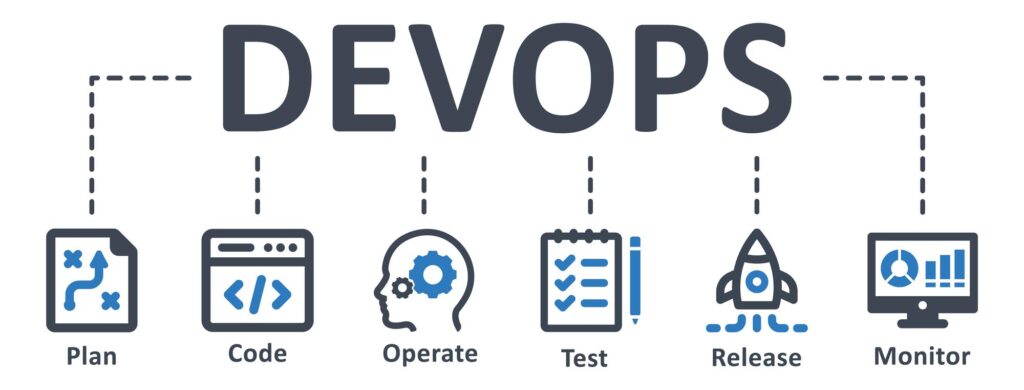Introduction:
Software engineering and development are constantly evolving fields, with new technologies, methodologies, and best practices emerging regularly. Staying up-to-date with the latest trends and best practices is crucial for software developers and engineers to create efficient, scalable, and secure software solutions. This guide aims to provide you with a comprehensive overview of the latest trends and best practices in software engineering and development, covering topics such as agile development, DevOps, microservices, cloud computing, and more.
Table of contents:
1. Introduction
2. Agile Development
2.1. Principles of Agile Development
2.2. Agile Development Methodologies (Scrum, Kanban, etc.)
2.3. Best Practices for Agile Development
3. DevOps
3.1. Principles of DevOps
3.2. DevOps Tools and Technologies
3.3. Best Practices for DevOps
3.4. Infrastructure as code (IaC)
3.5. Monitoring, logging, and observability:
4. Microservices
4.1. Principles of Microservices
4.2. Microservices vs. Monolithic Architecture
4.3. Best Practices for Microservices Development
5. Cloud Computing
5.1. Cloud Computing Principles and Benefits
5.2. Cloud Deployment Models (Public, Private, Hybrid)
5.3. Best Practices for Cloud Computing
6. Security
6.1. Importance of Security in Software Engineering and Development
6.2. Common Security Threats and Vulnerabilities
6.3. Best Practices for Software Security
7. Conclusion

2. Agile Development
Agile development is a methodology that emphasizes collaboration, flexibility, and iterative development. Agile methodologies have gained popularity in recent years due to their ability to adapt to changing requirements and deliver value to customers quickly.
1.1. Agile principles and values:
Agile development is based on four values: individuals and interactions over processes and tools, working software over comprehensive documentation, customer collaboration over contract negotiation, and responding to change over following a plan. These values are supported by twelve principles, including delivering working software frequently, embracing change, and promoting self-organizing teams.
1.2. Agile frameworks (Scrum, Kanban, Lean, XP):
There are several popular agile frameworks, including Scrum, Kanban, Lean, and XP. Scrum is a framework for managing and completing complex projects that involves a series of sprints, daily stand-up meetings, and product backlogs. Kanban is a visual framework that uses a Kanban board to manage work in progress and optimize flow. Lean is a methodology that focuses on delivering value to customers while minimizing waste. XP (Extreme Programming) is a framework that emphasizes coding practices, such as pair programming and continuous integration.
1.3. Best practices for agile development (continuous integration, test-driven development, retrospectives, etc.):
Agile development involves several best practices, including continuous integration (CI), test-driven development (TDD), and retrospectives. CI involves regularly integrating code changes into a shared repository to catch errors early. TDD involves writing tests before writing code to ensure that the code meets the requirements. Retrospectives involve regularly reflecting on the team’s performance and identifying areas for improvement.
Read: Top Programming Languages & Tech Jobs for Professionals

3. DevOps
DevOps is a set of practices that combine software development and IT operations to shorten the systems development life cycle while delivering features, fixes, and updates frequently, reliably, and at scale. DevOps practices aim to improve collaboration, automation, and monitoring throughout the software development life cycle.
3.1. DevOps principles and values:
DevOps is based on several principles, including automating as much as possible, collaborating across teams, and continuously measuring and monitoring performance. DevOps values include improving the overall software development life cycle, increasing collaboration, and delivering value to customers quickly and reliably.
3.2. DevOps culture and collaboration:
DevOps culture involves breaking down silos between development and operations teams, promoting collaboration and communication, and embracing a continuous improvement mindset. Collaboration is key to DevOps success, and several tools and practices support it, such as chat platforms, code reviews, and shared dashboards.
3.3. Continuous integration, delivery, and deployment:
Continuous integration (CI), continuous delivery (CD), and continuous deployment (CD) are key practices in DevOps. CI involves regularly integrating code changes into a shared repository, while CD involves automating the process of deploying code changes to production. Continuous deployment takes this a step further by automatically deploying changes to production without human intervention.
3.4. Infrastructure as code (IaC):
Infrastructure as code (IaC) involves managing infrastructure using code, rather than manually configuring servers and services. IaC tools, such as Terraform and CloudFormation, allow teams to define infrastructure as code and version control changes.
3.5. Monitoring, logging, and observability:
Monitoring, logging, and observability are critical practices in DevOps. Monitoring involves tracking system metrics, while logging involves recording events and errors. Observability takes these practices a step further by collecting detailed telemetry data to diagnose and troubleshoot issues.

4. Microservices
Microservices architecture is an approach to software development that involves building small, independently deployable services that work together to form a larger application. Microservices architecture aims to improve scalability, flexibility, and resilience.
4.1. Microservices architecture principles and benefits:
Microservices architecture involves breaking down applications into smaller, independently deployable services. This approach offers several benefits, such as increased scalability, resilience, and flexibility. Microservices architecture also allows teams to deploy changes to individual services, rather than deploying the entire application at once.
4.2. Microservices vs. monolithic architecture:
Monolithic architecture involves building applications as a single, cohesive unit. This approach can be easier to develop and deploy initially, but it can become unwieldy and difficult to scale over time. Microservices architecture, on the other hand, can be more complex to develop and manage, but it offers greater flexibility and scalability, making it well-suited for large and complex systems.
4.3. Best practices for microservices development (API-first approach, containerization, service mesh, etc.):
Several best practices can help teams successfully develop microservices-based applications. One approach is to adopt an API-first approach, where services are designed around clear and consistent APIs. Containerization, using tools like Docker, can simplify deployment and scaling of microservices. Service mesh, such as Istio or Linkerd, can help manage traffic between services and add resiliency and security.

5. Cloud Computing
Cloud computing refers to the practice of using remote servers hosted on the internet to store, manage, and process data. Cloud computing offers a flexible and cost-effective way to build, deploy, and scale software applications.
5.1. Cloud computing principles and benefits:
Cloud computing involves delivering computing resources, such as servers and storage, over the internet. Cloud computing offers several benefits, including cost savings, scalability, and flexibility. Cloud providers, such as Amazon Web Services (AWS), Microsoft Azure, and Google Cloud Platform, offer a wide range of services and tools to help teams build and deploy applications in the cloud.
5.2. Cloud deployment models (public, private, hybrid):
There are several cloud deployment models, including public, private, and hybrid. Public clouds, such as AWS and Azure, offer shared resources that are accessible over the internet. Private clouds are dedicated resources that are not shared with other organizations, while hybrid clouds combine public and private resources.
5.3. Best practices for cloud computing (auto-scaling, load balancing, serverless computing, etc.):
Several best practices can help teams optimize their use of cloud computing resources. Auto-scaling can automatically adjust resource allocation based on demand, ensuring that applications are always running efficiently. Load balancing can distribute traffic across multiple servers, preventing any one server from becoming overloaded. Serverless computing, using services like AWS Lambda or Azure Functions, can eliminate the need for managing servers entirely.

6. Security
Software security is a critical aspect of software development and engineering. Security breaches can have severe consequences, including financial losses, reputational damage, and legal consequences.
6.1. Importance of security in software engineering and development:
Security is critical in software engineering and development to protect applications and data from cyber attacks. Cyber attacks can result in data breaches, financial loss, and damage to a company’s reputation. It’s essential to incorporate security best practices throughout the software development lifecycle to minimize vulnerabilities and protect against threats.
6.2. Common security threats and vulnerabilities (SQL injection, cross-site scripting, etc.):
There are several common security threats and vulnerabilities that developers need to be aware of, including SQL injection, cross-site scripting, and phishing attacks. SQL injection involves inserting malicious code into SQL statements to gain unauthorized access to data, while cross-site scripting involves injecting malicious code into web pages viewed by other users. Phishing attacks involve tricking users into providing sensitive information, such as usernames and passwords.
6.3. Best practices for software security (OWASP Top 10, secure coding practices, encryption, etc.):
Several best practices can help ensure the security of software applications. The Open Web Application Security Project (OWASP) provides a list of the top 10 web application security risks, which can serve as a guide for identifying and mitigating potential vulnerabilities. Secure coding practices, such as input validation and error handling, can prevent common vulnerabilities. Encryption, such as SSL/TLS, can protect data in transit, while access control can limit access to sensitive data and functions.
7. Conclusion
Software engineering and development are continually evolving fields that require continuous learning and adaptation to stay ahead. This guide has covered some of the latest trends and best practices in software engineering and development, including agile development, DevOps, microservices, cloud computing, and security. By adopting these practices, software developers and engineers can create efficient, scalable, and secure software solutions that meet the needs of their clients and users.






